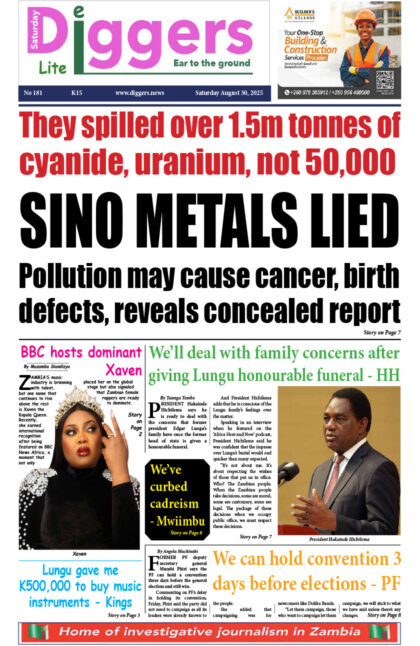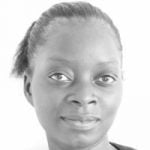In the past few weeks, I’ve heard too many stories of Zambians losing their lives or limbs to diabetes. And every time, I think: this didn’t have to happen.
Diabetes isn’t a sudden killer. It’s a condition you can live with for decades – if you have the right tools, the right information, and consistent care. Yet across Zambia, we still face huge gaps in awareness, monitoring, and access to the most updated medications.
We don’t always have the latest treatment options on the NHIMA system. In rural areas, clinics can be far away and hard to reach. And in both rural and urban settings, we have very few specialists in diabetes care. Most people only get help when something is already wrong.
Other African Countries’ Technologies
In different parts of Africa, people are starting to use mobile-based health tools to help manage conditions like diabetes, high blood pressure, and heart disease.
These aren’t fancy gadgets for the rich — some are as simple as a mobile app that sends tips, tracks your health information, or connects you to a nurse or doctor for advice.
One example is Afya Pap, a service used in countries like Kenya and Uganda. It sends health reminders, offers educational content, and can connect users to medical advice. It’s not perfect and it doesn’t replace seeing a doctor, but it adds an extra layer of support.
There are others too:
• Hello Doctor in South Africa, which lets users send health questions by text.
• mPharma in Ghana, which helps people find affordable medication.
• Ada Health, an app available in several African markets, which gives symptom checks and health guidance.
These tools have different features, but they share one idea: making health information and advice easier to access for everyday people.
Why this Matters for us
Here in Zambia, most people don’t have constant access to a healthcare professional. They might go to the clinic once in a while, but in between visits, there’s little follow-up. If they forget their medication, don’t understand their readings, or can’t afford a refill, there’s no quick way to get help.
I know this first-hand. As someone who has lived with type 1 diabetes for over 30 years, I’ve learned that managing the condition isn’t about one big hospital visit — it’s about the small, daily decisions:
• What you eat.
• When you take your medication.
• How you respond to high or low blood sugar.
Without support, those small decisions get harder, especially if you don’t have up-to-date information.
Learnings and Collaborations
Zambia doesn’t have to start from scratch. We can look at what’s working elsewhere in Africa and adapt it to our reality.
That could mean:
• Partnering with innovators like Afya Pap, Hello Doctor, or mPharma to offer simplified versions of their services here.
• Training health workers to guide patients on how to use these tools alongside their clinic visits.
• Using SMS, WhatsApp, or community radio to share reliable health information for those without smartphones.
These are not luxuries, they are high-impact ideas that could reach thousands without building new hospitals.
Our Reality in Zambia
I know that the idea of “apps” can sound far away. Data costs money. Not everyone has the latest phone. But even basic mobile phones can receive SMS tips or voice messages. We’ve seen this work for mobile money, farming advice, and election reminders. The same can be done for health.
It’s not about replacing the clinic; it’s about having a safety net in between those clinic visits.
Closing the Gap
Other African countries are already 5 to 10 years ahead in using mobile health tools. That doesn’t mean we can’t catch up, it just means we can learn from them.
Imagine if every person newly diagnosed with diabetes in Zambia automatically got signed up for a free SMS support service. Imagine if rural clinics could use simple apps to keep in touch with patients and remind them about check-ups.
These things are already happening in other parts of Africa. They could happen here if we choose to make them happen.
Awareness is the First Step
Right now, many people, from patients to policymakers, don’t even know these tools exist. And if you don’t know something exists, you can’t ask for it.
That’s why articles like this matter. We have to start talking about the gap between what’s possible and what’s available here. Not to compare ourselves to the West, but to compare ourselves to countries facing similar challenges who are making progress.
We have the technology. We have the health professionals. We have the examples from our own continent. What we need now is to connect the dots, and make sure the average Zambian can get health support not just at the clinic, but every day in between.
Because if a simple message or mobile service can help someone avoid losing their life or their limb, isn’t it worth trying?
(Kaajal Vaghela is a wellness entrepreneur, sportswear designer, and diabetes health consultant with over three decades of lived experience managing Type 1 diabetes. Having previously served as the chairperson of the Lusaka branch of the Diabetes Association of Zambia, she remains a passionate advocate for breaking down myths and building awareness about diabetes. For more information, check out: www.kaajalvaghela.com and for any feedback: [email protected])
























